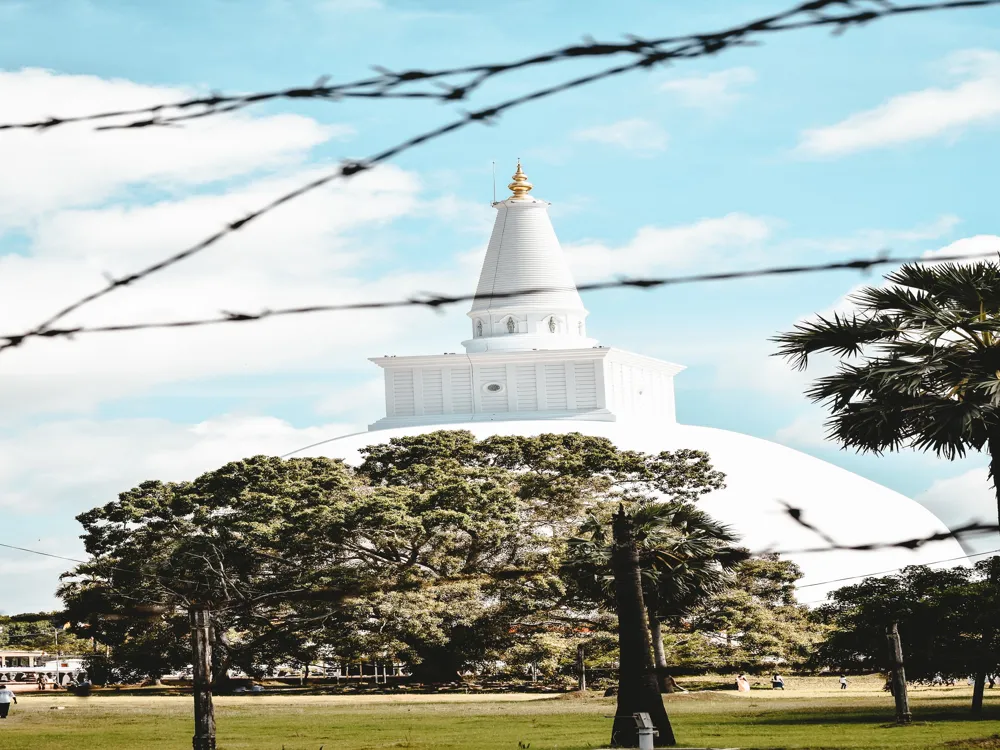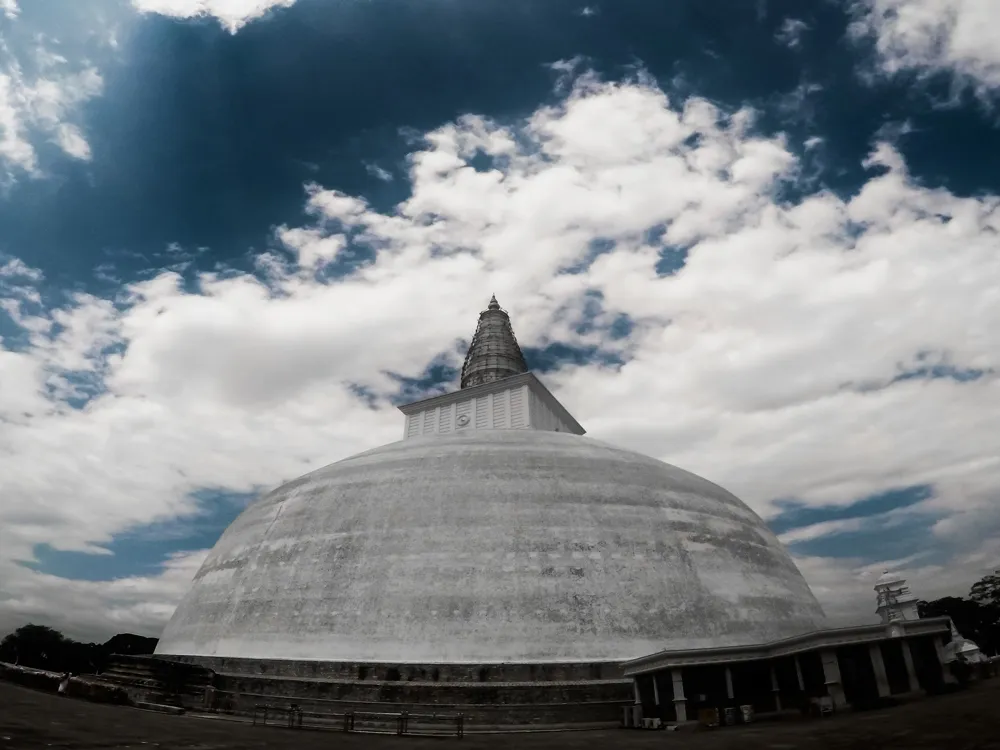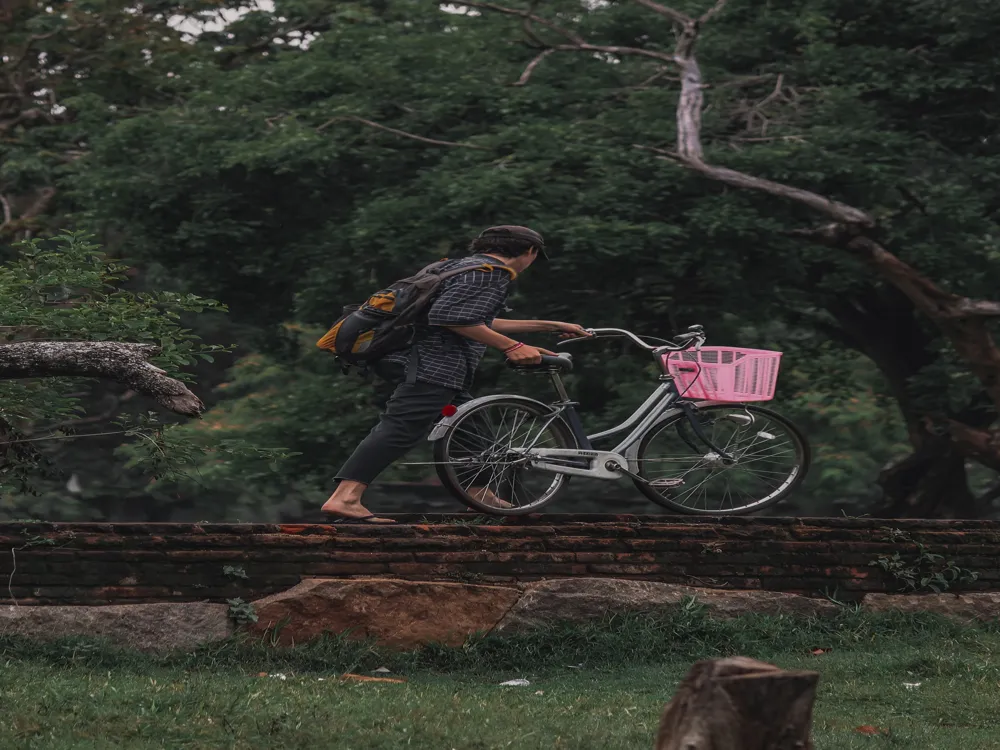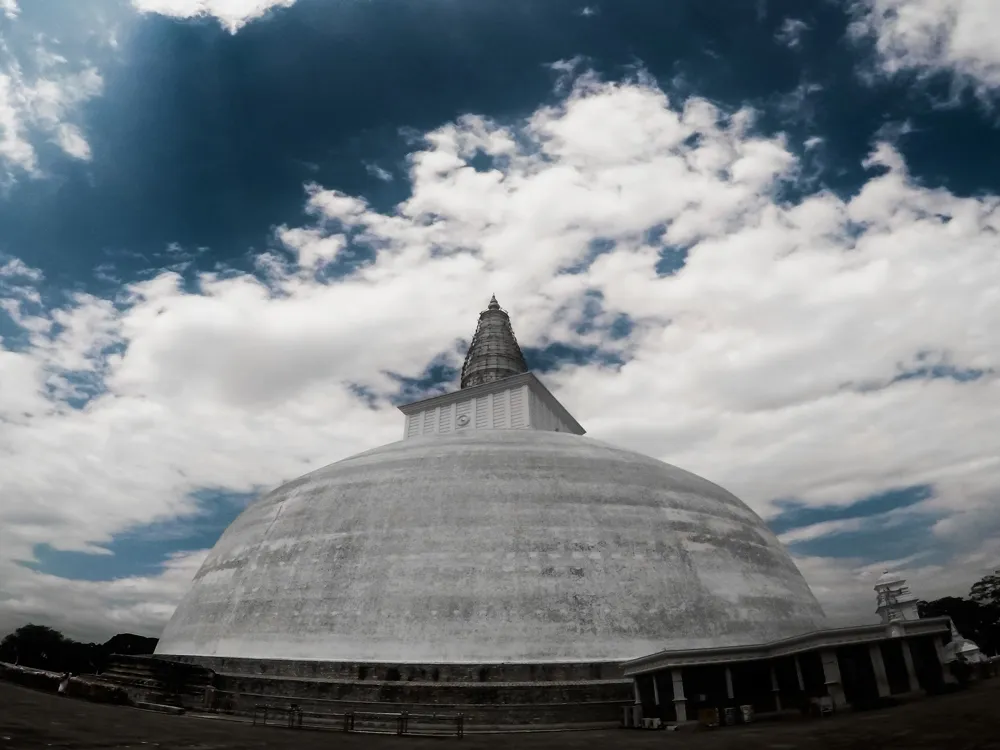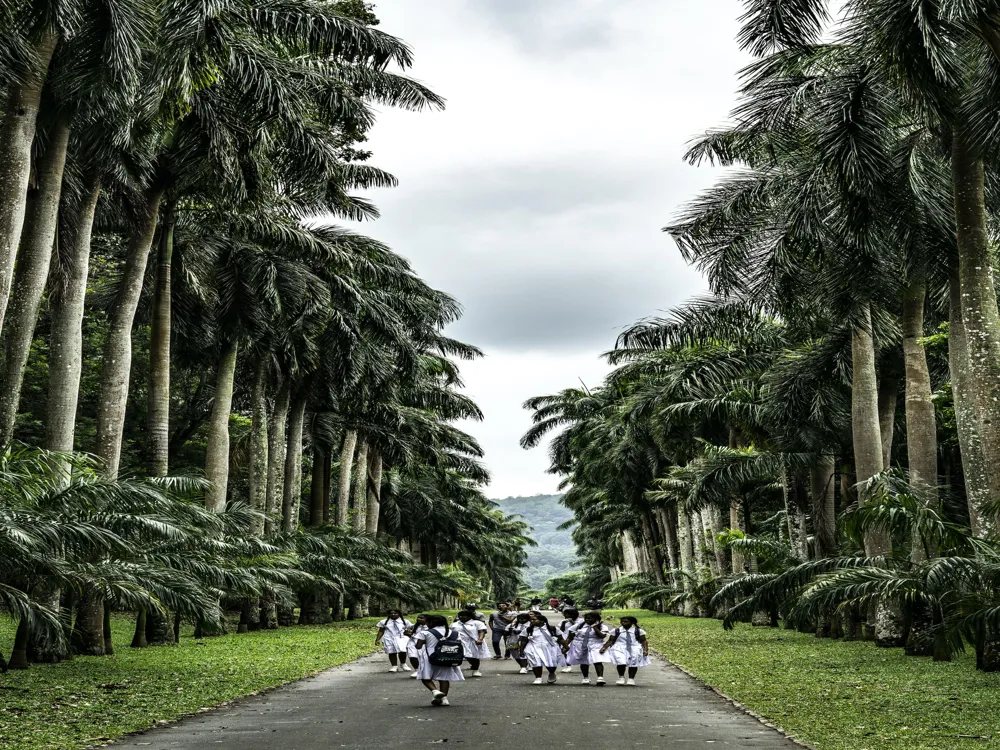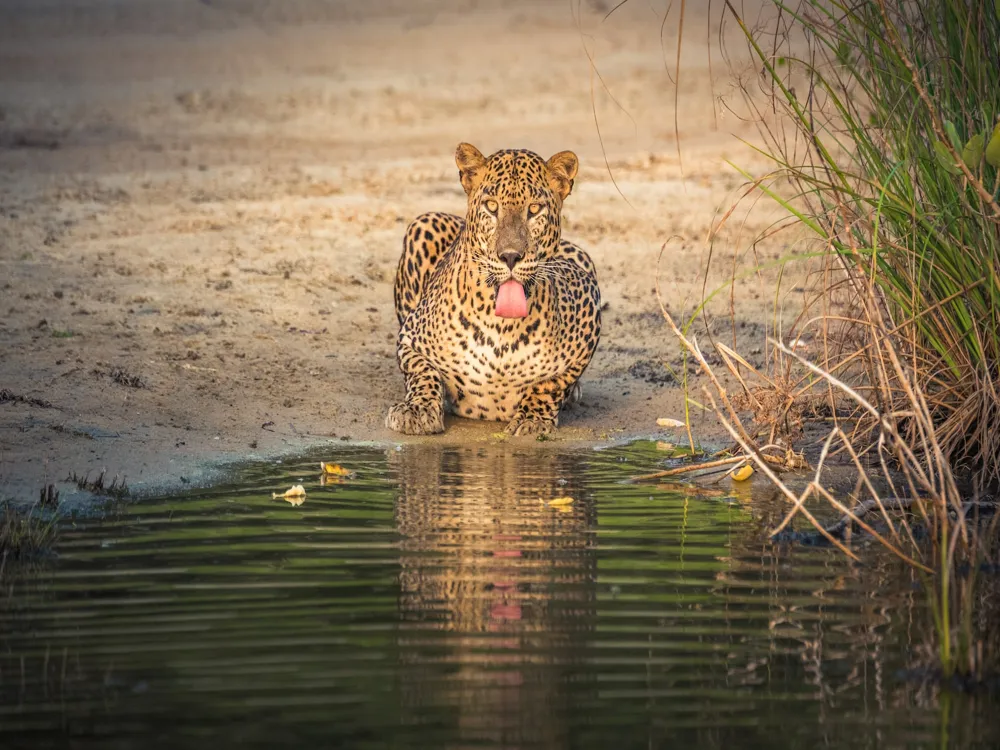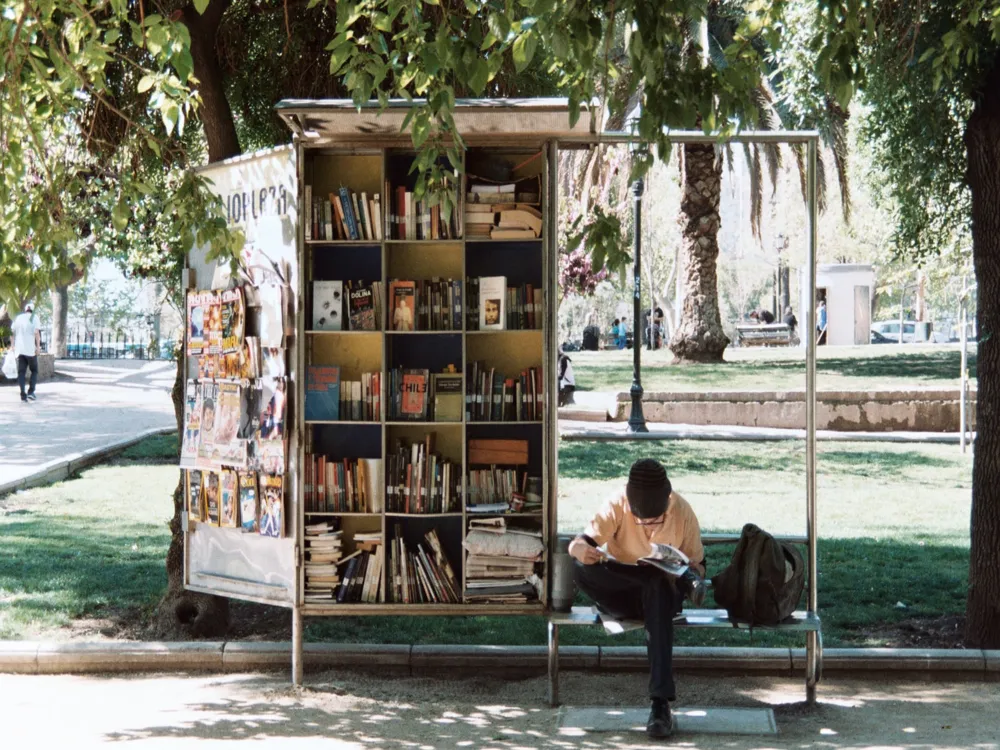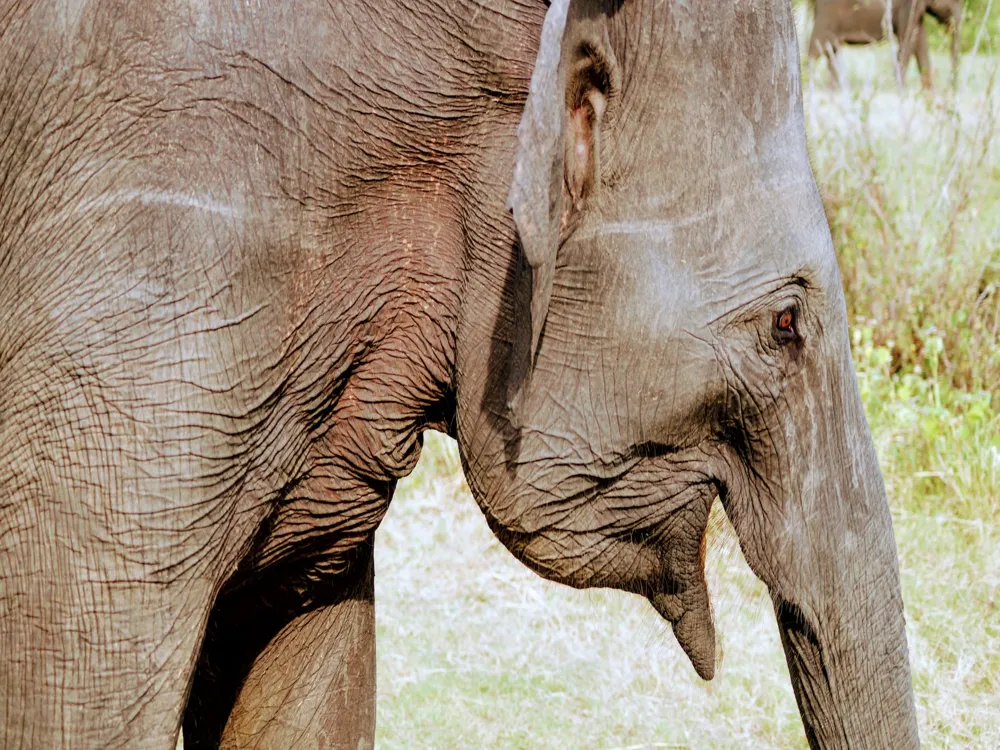Isurumuniya, a significant historical temple in Anuradhapura, Sri Lanka, stands as a testament to the rich cultural and architectural heritage of the ancient Sinhalese civilization. Located near the Tissa Wewa reservoir, this temple is famed for its rock carvings and unique architectural features, drawing thousands of visitors annually. The history of Isurumuniya dates back to the reign of King Devanampiya Tissa (307-267 BCE) and is closely linked with the introduction of Buddhism to Sri Lanka. This site has been a center of Buddhist monastic and educational activity for centuries. The temple is renowned for its distinctive rock outcrop structure, within which it is partially embedded. The surrounding landscapes, including lush gardens and natural rock formations, add to its serene and spiritual ambiance. Isurumuniya is particularly famous for its intricate stone carvings, the most notable being the Isurumuniya Lovers, believed to depict a royal couple from the 6th century. These carvings showcase the advanced artistic skills and aesthetic sensibilities of ancient Sinhalese artisans. The temple complex also features a vihara (monastic complex), a bodhigara (bodhi-tree shrine), and several stupas, each embodying unique aspects of Sinhalese Buddhist architecture. The architecture of Isurumuniya is a harmonious blend of natural rock and traditional building techniques, reflecting the Sinhalese architectural philosophy of integrating structures into the natural environment. The temple's design uniquely utilizes the granite rock, forming part of its walls and chambers. This integration with the natural rock not only provides a strong foundation but also adds an aesthetic dimension to the structure. One of the most striking features of Isurumuniya is its rock carvings and sculptures, which are considered masterpieces of Sinhalese art. The Isurumuniya Lovers carving, a symbol of love and devotion, is intricately detailed, demonstrating the high level of craftsmanship. Other significant carvings include depictions of elephants, which are thought to symbolize the strength and resilience of the Buddhist faith. The temple's stupa, built atop the rock, is a classic example of the bubble-shaped stupas that characterize ancient Sinhalese architecture. Isurumuniya is best visited during the cooler months from January to April. This period offers pleasant weather, making exploration more comfortable. Visitors should dress modestly, covering shoulders and legs. Respectful behavior is expected within the temple premises. Photography is allowed, but flash photography may be restricted near sensitive carvings to prevent damage. Consider hiring a local guide for a more insightful experience, as they can provide detailed information about the temple's history and architecture. The temple area has uneven terrain and steps, so visitors with mobility issues should take necessary precautions. Isurumuniya is easily accessible from Anuradhapura, a major city in Sri Lanka. Visitors can reach the temple by various means: Read More:Overview of Isurumuniya in Anuradhapura
Architecture of Isurumuniya
Tips When Visiting Isurumuniya
Best Time to Visit
Dress Code and Conduct
Photography Guidelines
Guided Tours
Accessibility
How To Reach Isurumuniya
Isurumuniya
Anuradhapura
₹ 21,999 onwards
View anuradhapura Packages
Weather :
Tags : Historical Site
Timings : 9:00 AM - 5:00 PM
Time Required : 1 - 1.5 hours
Entry Fee : LKR 500
Planning a Trip? Ask Your Question
Anuradhapura Travel Packages
View All Packages For Anuradhapura
Top Hotel Collections for Anuradhapura

Private Pool

Luxury Hotels

5-Star Hotels

Pet Friendly
Top Hotels Near Anuradhapura
Other Top Ranking Places In Anuradhapura
View All Places To Visit In anuradhapura
Faq on Anuradhapura
What is Isurumuniya in Anuradhapura?
Isurumuniya is a Buddhist temple located in the ancient city of Anuradhapura, Sri Lanka. It is renowned for its beautiful rock carvings and serene surroundings.
What are the opening hours of Isurumuniya in Anuradhapura?
Isurumuniya is typically open to visitors from early morning until late afternoon. Exact opening hours may vary, so it's recommended to check with local authorities or tourist information centers for the most up-to-date information.
What are the main attractions at Isurumuniya in Anuradhapura?
The main attractions at Isurumuniya include the rock carvings depicting scenes from Buddhist mythology, the tranquil pond surrounding the temple, and the serene ambiance ideal for meditation and contemplation.
Is there an entrance fee for Isurumuniya in Anuradhapura?
Yes, there is usually a nominal entrance fee to visit Isurumuniya. The fee may vary depending on factors such as nationality and age. It's advisable to inquire about the current entrance fee before planning your visit.
How long does it take to explore Isurumuniya in Anuradhapura?
The time required to explore Isurumuniya can vary depending on individual preferences. On average, visitors spend around 1 to 2 hours exploring the temple complex, admiring the rock carvings, and enjoying the peaceful surroundings.
View anuradhapura Packages
Weather :
Tags : Historical Site
Timings : 9:00 AM - 5:00 PM
Time Required : 1 - 1.5 hours
Entry Fee : LKR 500
Planning a Trip? Ask Your Question
Anuradhapura Travel Packages
View All Packages For Anuradhapura
Top Hotel Collections for Anuradhapura

Private Pool

Luxury Hotels

5-Star Hotels

Pet Friendly
Top Hotels Near Anuradhapura
Other Top Ranking Places In Anuradhapura
Faq on Anuradhapura
What is Isurumuniya in Anuradhapura?
Isurumuniya is a Buddhist temple located in the ancient city of Anuradhapura, Sri Lanka. It is renowned for its beautiful rock carvings and serene surroundings.
What are the opening hours of Isurumuniya in Anuradhapura?
Isurumuniya is typically open to visitors from early morning until late afternoon. Exact opening hours may vary, so it's recommended to check with local authorities or tourist information centers for the most up-to-date information.
What are the main attractions at Isurumuniya in Anuradhapura?
The main attractions at Isurumuniya include the rock carvings depicting scenes from Buddhist mythology, the tranquil pond surrounding the temple, and the serene ambiance ideal for meditation and contemplation.
Is there an entrance fee for Isurumuniya in Anuradhapura?
Yes, there is usually a nominal entrance fee to visit Isurumuniya. The fee may vary depending on factors such as nationality and age. It's advisable to inquire about the current entrance fee before planning your visit.
How long does it take to explore Isurumuniya in Anuradhapura?
The time required to explore Isurumuniya can vary depending on individual preferences. On average, visitors spend around 1 to 2 hours exploring the temple complex, admiring the rock carvings, and enjoying the peaceful surroundings.







